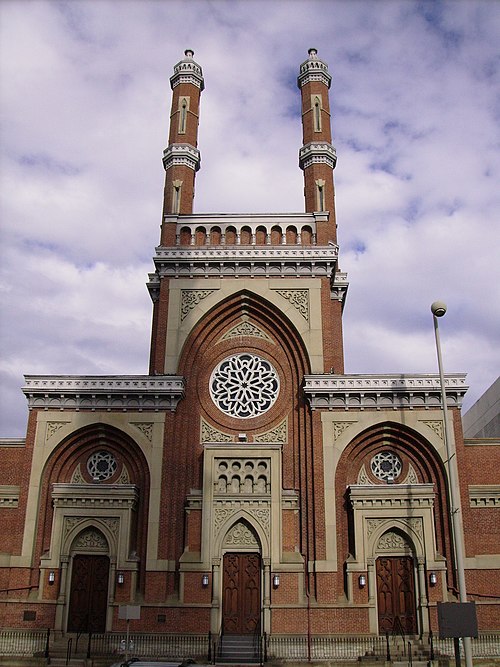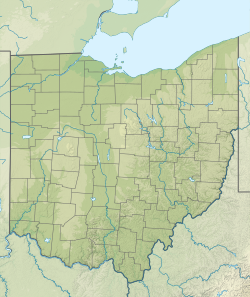| Isaac M. Wise Temple | |
|---|---|
 The Isaac M. Wise Temple, in 2006 | |
| Religion | |
| Affiliation | Reform Judaism |
| Ecclesiastical or organisational status | Synagogue |
| Leadership |
|
| Status | Active |
| Location | |
| Location | Plum Street:
|
| Country | United States |
Location in Ohio | |
| Coordinates | 39°6′13″N84°31′5″W / 39.10361°N 84.51806°W (Plum Street) |
| Architecture | |
| Architect | James Keys Wilson |
| Type | Synagogue architecture |
| Style | |
| Established | 1841 (as a congregation) |
| Completed | 1866 |
| Construction cost | $275,000 |
| Minaret | Two |
| Website | |
| wisetemple | |
Plum Street Temple | |
 Early 20th century photo of the Plum Street Temple | |
| Area | less than one acre |
| NRHP reference No. | 72001021 |
| Significant dates | |
| Added to NRHP | December 27, 1972 |
| Designated NHL | May 15, 1975 |
| [1] [2] | |
The Isaac M. Wise Temple (formerly the Plum Street Temple), commonly called the Wise Temple, is an historic Reform Jewish congregation and synagogue located in Cincinnati, Ohio, in the United States. The congregation's historic Plum Street temple was erected in honour of Rabbi Isaac Mayer Wise, who was among the founders of Reform Judaism in the United States. The temple building was designed by prominent Cincinnati architect James Keys Wilson and its design was inspired by the Alhambra at Granada. [3]
Contents
The temple is located at 720 Plum Street in Cincinnati and was built chiefly during the Civil War at a cost of $275,000 ($5.91 million in 2024) [4] by members of the Lodge Street Synagogue. [5] The temple was dedicated on Friday, August 24, 1866, and is among the oldest synagogue buildings in the United States. [6] The temple is across Plum Street from the historic Saint Peter In Chains Cathedral and next to the site of the former St. Paul Episcopal Cathedral, which was demolished in 1937. In 1972, the Plum Street Temple was placed on the National Register of Historic Places, and it was designated a National Historic Landmark in 1975 for its architecture and its role in the Reform movement. [2]
In 1976, the congregation expanded its facilities to include a new synagogue, community center, and school located in Amberley Village.





